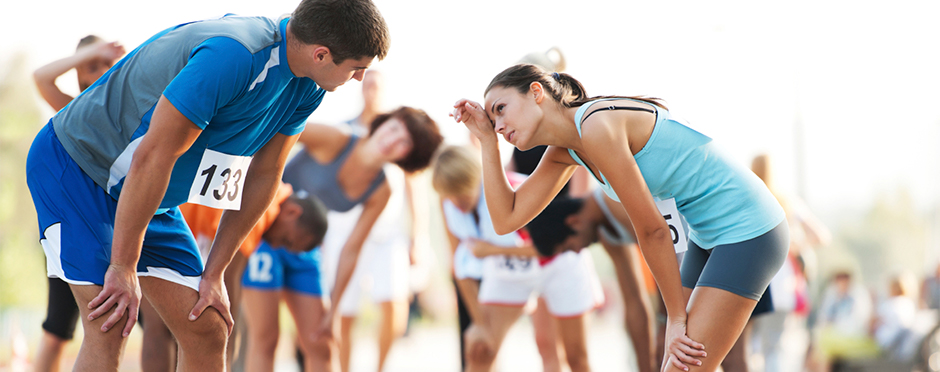
Life After 26.2
Leave a CommentSome have just completed their first marathon, while others may have completed number 10 and are done for the season. Everyone is obviously different in terms of how they recover best, and if you have completed more than one marathon you may already know what works best for you.
However, there are some post-race strategies to implement for a good recovery and prevent overuse injuries down the road whether you are a novice or seasoned runner. Whether this was your first marathon or last, you’re pushing your body to its max both during training and on race day. Scientifically, several things occur after the event.
Muscle soreness and fatigue
- There is obvious muscle soreness and fatigue. Muscle fiber necrosis and inflammation is induced from training and the race itself. 1,2
- Researchers have detected in imaging that simply due to the excessive amount of work from the hamstring during a marathon some runners present with small muscle fiber strains.2
- Therefore, your muscles have less power and durability for up to 14 days post marathon.
Cellular level
- There is cellular damage post marathon: oxidative damage and increased creatine kinase. These are needed to keep your cells and muscles healthy.3
- This all basically means the body is in need of rest (7-10 days) to repair and restore cells back to normal.
Immune System
- The immune system is commonly compromised from overtraining for at least three days following a marathon.
For these reasons, the optimal post-marathon recovery avoids running and cross training for at least the first 3-4 days. During these first several days, eat healthy, get some extra sleep, stretch, hydrate and walk.
The most common types of cross training for endurance athletes are swimming and biking. Soul Cycle is also a good option for cardio and working on your core and glute strength. Plus, the comradery and positive energy may help build you back up after the marathon.
With any nagging ache, pain, or injury following the marathon, make sure to get it checked out rather than thinking it will just go away on its own. Visit any Athletico to receive a free assessment.
Free assessments are available both in-clinic and virtually through our telehealth platform.
The Athletico blog is an educational resource written by Athletico employees. Athletico bloggers are licensed professionals who abide by the code of ethics outlined by their respective professional associations. The content published in blog posts represents the opinion of the individual author based on their expertise and experience. The content provided in this blog is for informational purposes only, does not constitute medical advice and should not be relied on for making personal health decisions.
1 Hikida RS, Staron RS, Hagerman FC, Sherman WM, Costill DL. Muscle fiber necrosis associated with human marathon runners. Journal of Neurological Science. 1983; 59(2): 185-203.
2 Froeling M, Oudeman J, Strijkers GJ, Maas M, Drost MR, Nicolay K, and Nederveen AJ. Muscle changes detected with diffusion-tensor imaging after long-distance running. Radiology. 2015; 274(2): 548-562.
3 Kelvin Tsai, Tai-Ger Hsu et al. Oxidative DNA damage in human peripheral leukocytes induced by massive aerobic exercise. Radical Biology and Medicine. 2001; 31(11): 1465-1472.
4 Lakier S. Overtraining, excessive exercise, and altered immunity: is this a T helper-1 versus T helper-2 lymphocyte response? Sports Medicine. 2003; 33(5): 347-364.
